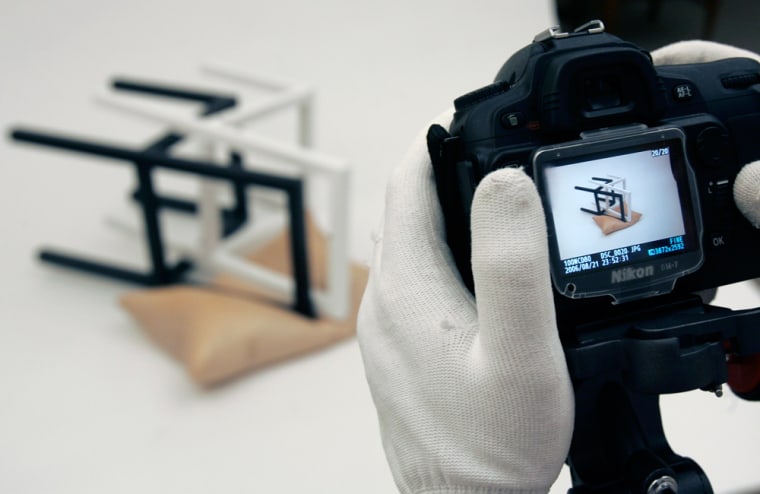The keepers of history aren't all about looking back in time.
Curators of museums large and small are embracing the Internet as a way to move older works from storage to cyberspace — a sort of permanent store room unaffected by moisture and pests, and one that anyone can enter.
At the Burchfield-Penney Art Center in Buffalo, workers are busy digitally photographing each work in their care from various angles, and loading the files onto a computer. Eventually, visitors to a Web site will be able to view the entire collection on line, cross-reference works by keywords and read histories and notes.
The project is being helped by a grant from the Institute of Museum and Library Services, which has been strongly encouraging digitization of collections, especially in smaller libraries and museums where inadequate fire and water controls put the future of rare items in jeopardy.
"Think about a document, let's say the founding fathers' charter of a town," the federal agency's director, Anne-Imelda Radice, said. "It's not just important knowing what it said. What does it look like? Digital can accurately reproduce what it looks like, the cracks in the paper, everything about it. This is an incredible tool."
A few months ago, the IMLS held a conference in Denver that focused on digitization and the IMLS is working to standardize the process.
"The big places have been involved with this for a while and they are able to afford the equipment," Radice said. "Although IMLS is working hard to help develop one standard, smaller institutions have been a little bit afraid to get into this because if you buy this equipment and it goes out of date, it's an economic issue.
"I think we're getting to the point now where there are some standard procedures."
Authorities estimate there are 4.8 billion artifacts held in U.S. archives, libraries, museums and historical societies, but that one-in-four institutions have no controls to protect against temperature, humidity and light.
Digitizing collections also gives curators a reason to examine each piece and prioritize which need care.
"When you handle the work, you realize it's in an acidic mat or something like that and so you change the mat to non-acidic mat board, or maybe you take it out of the frame because the glass is too close to the surface of the object," said Scott Propeack, collections manager at Burchfield-Penney. "There's a constant analysis of the condition."
Another bonus, it opens the doors of less famous museums to tourists who might not make the trip in person.
Radice points to places such as the Buffalo Bill Museum in Golden, Colorado, with its Native American and Wild West memorabilia, or the Hastings Museum of Natural and Cultural History in Hastings, Nebraska, with its one-of-a-kind collection of Kool-Aid records. The drink was invented there. Both sites are working toward digitizing their collections.
The Hastings museum has in its collection chemists' notes and missives from Kool-Aid inventor Edwin Perkins, along with various packages depicting the graphics changes over the years.
"We really have some priceless records and priceless artifacts, too," said curator Teresa Kruetzer-Hodson. "Some of the bindings on some of the folders are coming undone. They are definite candidates for (digitization) and creating a research component for people to have access to without actually thumbing through the artifacts themselves."
Burchfield-Penney, which is dedicated to the watercolorist Charles E. Burchfield (1893-1967), who spent most of his life in western New York, has more than 7,500 works in the permanent collection, plus more than 25,000 drawings and notes and 10,000 pages of handwritten journals by the artist.
But like most museums, only 2 percent of the collection is on display at any given time. That means a lot of historic material goes unseen.
"It's accessible (now) if you go and visit and archive and look through a card catalog," Propeack said, "but with the shift to creating digital images of objects and providing support and metadata content, you can allow people at whatever time is best for them to go online and access it and learn about themselves or about the community or art in general."
The center in 2007 received a three-year grant from IMLS totaling $149,465 for the project.
"It's expensive — there's no question about that," Radice said. "The balance is, of course, losing the item."
